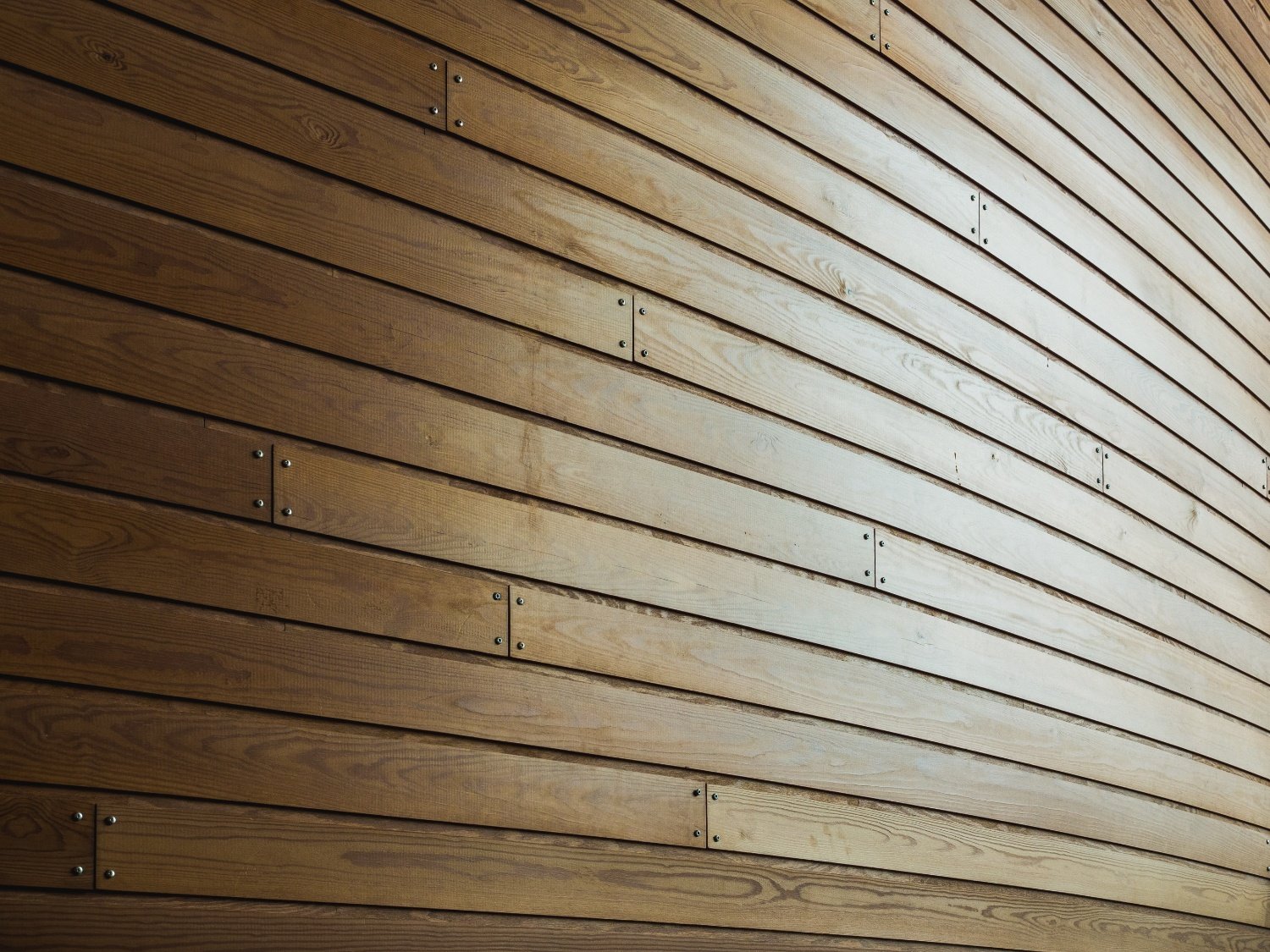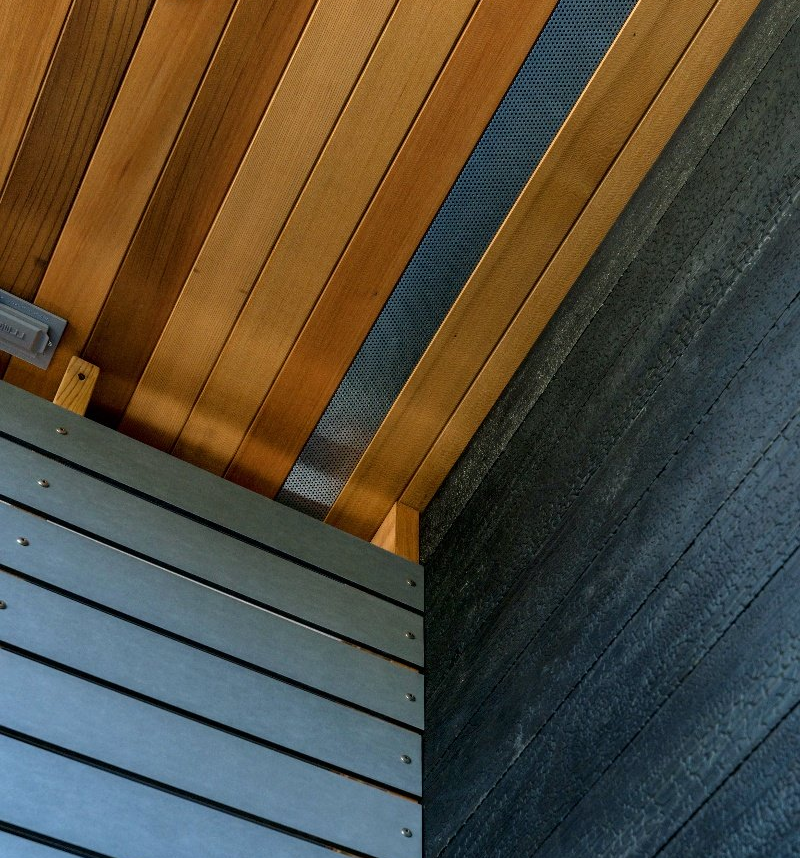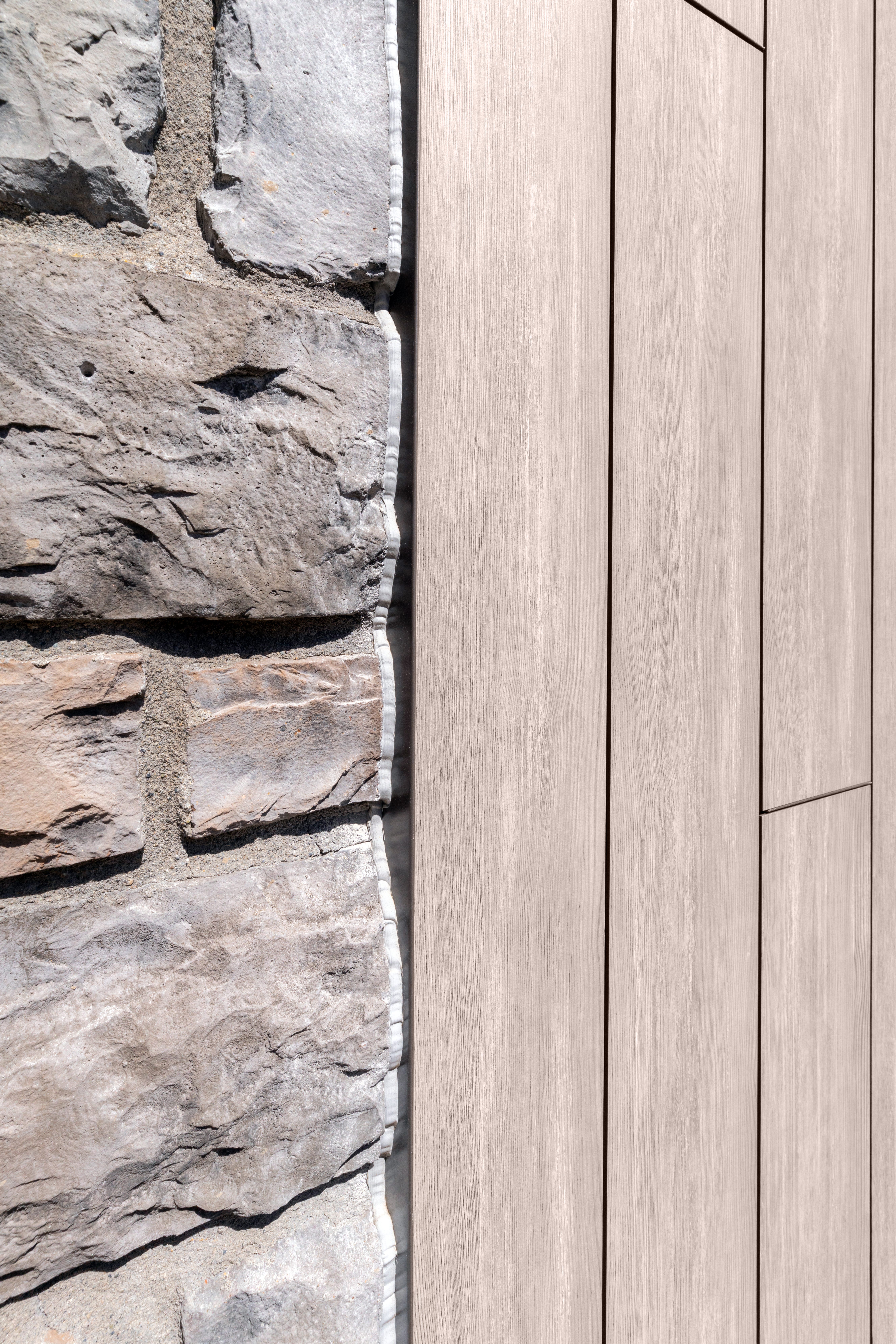Pros and Cons of Different Siding Options

Siding your home is a big decision. Like most homeowners, you want something that is both functional and beautiful. Check out the tips below on things to keep in mind when selecting new siding for your home.
Things to Consider When Selecting Your Siding
When selecting your new house siding, there are five main factors to consider. The look, function and longevity, purpose, cost, and installation process of the siding should be at the top of the list during your selection process.
Look
You will be looking at the siding you choose for your home for a long time, so you want to select a look that you love. And there are plenty of options to choose from, depending on the material you choose — vinyl, fiber, wood, metal, aluminum, brick, stucco or stone. Your hardest decision will probably be deciding which siding is the most aesthetically pleasing to you.
For inspiration, try taking a stroll through your neighborhood and observing which material your neighbors use. Do you like the textures? The patterns? The design? Ask yourself these questions and take note of your thoughts. This can give you a good sense of what the siding actually looks like on the house and what you prefer.
Function and Longevity
Another critical factor to consider when choosing new siding is its function and longevity. Different siding materials vary in their overall durability. Weighing out the pros and cons of various siding material durability is an essential element to consider when selecting which types of siding you use.
Purpose
You will also want to take into consideration the purpose of your siding. Consider the location and climate that your new siding will be exposed to. For the longevity of your siding, these elements will all influence the type of siding you choose for your home.
Cost
The cost of the various siding material types will also play a significant role in which siding you ultimately choose for your home. Vinyl siding is almost always the least expensive way to side your home. You can even find vinyl siding for as cheap as $2 per square foot. Of course, you’re going to be looking at your home’s siding for many years to come, so it’s important to balance the cost with what material you like looking at. It’s also important to remember that choosing a slightly more expensive, but lower maintenance siding may end up saving you money in the long run.
Installation
The final factor to consider when choosing your new siding is the installation process. Various materials have different installation processes and difficulties. Some siding types will also require more maintenance throughout their lifetimes compared to other material types.
The Breakdown on Different Siding Options
Let’s break down the many different siding options available to choose from by considering the metrics mentioned above.
Vinyl Siding
- Look
Vinyl siding is currently the most widely used material for exterior siding. It’s a durable, low-cost siding material that comes in a wide variety of colors and textures. You can get vinyl siding that replicates the look of wood-grain siding, wood shingles or even stone siding.
- Function and Longevity
Vinyl siding is extremely durable and very low maintenance. It only needs to be power washed once every couple of years, and minor scratches or gouges do not readily show on this type of material.
- Purpose
Vinyl siding works well in a variety of climates as it can withstand temperature and climate extremes. Premium vinyl siding is available for those looking for integrated insulation, or R-values of five or six. All vinyl siding is also water repellent and an excellent way to prevent water damage.
- Cost and Installation
Vinyl siding is also one of the cheapest siding options on the market, both in material and installation costs. Vinyl siding can be installed quickly and can even be installed directly over existing material. The average price of vinyl siding is $2 to $7 per square foot, installed.
Fiber Cement Siding
- Look
Fiber cement siding (also known as cement board siding or James Hardie siding) is another durable siding option that is available in a variety of styles, colors and designs. This type of siding material is made by dissolving wood pulp in water and then mixing the pulp with cement, clay and silica. Cement board siding is on the economical side of the more premium types of siding.
- Function and Longevity
Fiber cement siding is both a functional and affordable siding option. It has excellent durability as termites don’t attack this type of material due to the presence of cement. It is a good option for those seeking longevity from their home siding, lasting 50-100 years on average.
- Purpose
This siding material can sustain high winds and extreme temperatures easily. It’s also one of the more affordable premium siding options.
- Cost and Installation
While the materials for fiber cement siding are relatively cheap, it does require expert installation, which is labor-intensive and adds to the overall cost. In general, you can expect to pay $8 to $25 per square foot, installed.
Wood Siding
- Look
Wood siding is a premium siding material that comes in many species and grades. Some of the most popular wood siding options are board and batten, clapboard, plywood, hardboard and shingles. Within the wood siding category, we also include manufactured or engineered wood.
- Function and Longevity
Wood siding will require more maintenance compared to other siding options. This is because the material is generally not as durable as other siding options.
- Purpose
Wood siding holds up well in a variety of climate and weather conditions if sealed properly. Sealing your wood siding does add to the maintenance cost, but it is necessary to prevent moisture damage.
- Cost and Installation
Because of its rarity and ongoing maintenance costs, wood siding is relatively expensive. For the typical clapboard wood siding, you can expect to pay $10 to $25 per square foot, installed. Keep in mind, both wood type and grade will significantly affect the price of wood siding. Better grades of wood will add to the price of the siding.
Metal Siding
- Look
Metal siding has become an increasingly popular siding choice as it has both a long-term life expectancy and creates a clean, modern look. If you’re looking for an eco-friendly option, this is the siding you want, as it’s long-lasting and recyclable. Metal is also malleable and very versatile. The most popular types of metal siding are steel, copper, zinc, and aluminum (which has its own section in this article).
- Function and Longevity
Metal siding is extremely durable and is a popular choice for homeowners if pests or termites are prevalent in your area. It’s also fire- and water-resistant (though some metals, like steel, need to be coated or galvanized). Metal siding also typically requires less maintenance than other siding options.
- Purpose
Metal siding holds up well in a variety of weather conditions. Maintenance depends on which type of metal you choose. Aluminum, while less dense, is also rust-resistant. For steel siding, it needs to be galvanized and coated to prevent rust.
- Cost and Installation
Metal siding is also time-consuming to install, which adds to the overall cost. The typical metal siding will cost around $12 to $30 per square foot, installed. However, if you can afford the up-front cost, a well-done metal siding will last a long time and add to the curb appeal of your home.
Aluminum Siding
- Look
Aluminum siding used to be the most popular siding material, but it has since fallen out of favor due to the difficulty involved in repairing and keeping it clean. It is, however, available in nearly every color you can imagine.
- Function and Longevity
Aluminum is a durable material that provides a relatively long lifespan. However, aluminum is prone to denting. It’s also difficult to repair and replace when damaged, and can also be quite noisy during storms.
- Purpose
Aluminum siding does well in a variety of climates and weather conditions as the material doesn’t swell, rot, rust or promote mildew growth. However, when exposed to extreme elements, the material can retain a dull look.
- Cost and Installation
As far as cost goes, aluminum siding is relatively cheap. In fact, it’s one of the most affordable siding materials, beat only by vinyl. The material is lightweight, and this type of siding is easy to install and recyclable. You can expect to pay around $6 to $12 per square foot, installed. However, if you wanted a more premium aluminum sidings there are materials like “longboard” that start at around $18/sq. ft.
Brick Siding
- Look
Brick siding is quite limited when it comes to appearance. There are generally only a few variations of the same red color, ranging from a dark red to a lighter cream color. In addition to color, you must also decide whether you want a thin or full brick veneer.
- Function and Longevity
The material is excellent for those who don’t want to spend a lot of money on upkeep, as brick siding is virtually maintenance-free. It won’t rot, fade, peel or dent, and is an excellent barrier against extreme weather conditions. That’s good, because if you do end up requiring repairs on your brick, it won’t be cheap.
- Purpose
This type of siding holds up well in a variety of climates. Brick siding also has the potential to save you money on your electric bill as the brick acts as a natural insulator.
- Cost and Installation
The cost of brick siding and installation is a bit pricier compared to other siding alternatives. This is because of the cost involved in creating the bricks, as well as the labor cost of a skilled mason required to install them. Brick siding generally costs $20 to $40 per square foot, installed.
Stucco Siding
- Look
The common types of stucco siding are natural, synthetic and hybrid. You can also achieve a variety of colors and textures with your stucco.
- Function and Longevity
Stucco siding is durable and low maintenance, but it provides very little insulation. You can get around this by applying the standard three coats.
- Purpose
This type of siding requires very little maintenance and can stand up to fluctuating weather conditions. It’s also fire-resistant and insect-resistant.
- Cost and Installation
Installation of stucco siding is not a DIY project. You will need to hire a stucco professional should you choose this type of siding. You can expect to pay between $15 to $26 per square foot, installed.
Stone Siding
- Look
While stone siding is one of the most expensive siding options, it’s also one of the longest-lasting. For those looking for that classic, built-to-last look, stone siding is a great option. Like wood, it’s available in both real stone and man-made varieties (commonly referred to as cultured stone). While faux stone is lighter and generally less expensive, it also has a slightly shorter lifespan than natural stone. Color options for natural stone are restricted to what that occurs in nature. For faux stones, a variety of colors can be achieved using different pigments.
- Function and Longevity
Stone siding has the longest lifespan of all siding materials (though metal and brick is comparable). It is both fire- and insect-resistant and, unlike metal, has no noise issues. It’s also very low maintenance.
- Purpose
Stone siding is extremely durable and stands up well to weather extremes. It has the best lifetime of all siding options and is an excellent option for those seeking a classic look for their home exterior.
- Cost and Installation
Natural, cultured and solid stone can all be quite pricey. However, your time and money will provide you with an elegant home exterior that will last a long time. To save some money, you can always opt for the poly-based stone veneer option. Natural stone siding generally falls between $35 to $50 per square foot, installed. Labor costs are also typically higher for stone, as it is a relatively more intensive installation process.
We Can Help You Get It Right
We are siding and home exterior experts here at Synapse Construction. So whatever questions you have, we can help. Contact us, and we can help you choose the right siding material for your project and ensure it gets done right the first time.
We look forward to working with you on your next exterior construction project!

